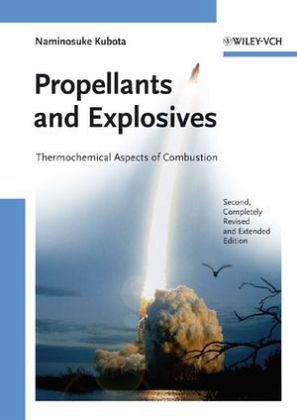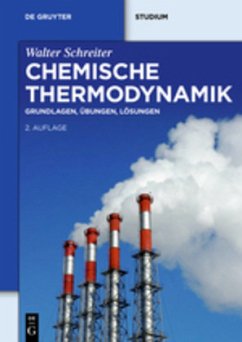
Propellants and Explosives
Thermochemical Aspects of Combustion

PAYBACK Punkte
68 °P sammeln!
Addressing both experimental and theoretical aspects, this second edition of the classic covers the thermochemical and combustion characteristics of all important energetic materials. With five new chapters for updated coverage of significant developments plus two new appendices.
Physikalisch-chemische Parameter wie Komponenten, Katalysatoren, Druck, Anfangstemperatur und Strömungsfeld bestimmen entscheidend das Abbrandverhalten von Treib- und Explosivstoffen.
Das Buch beschreibt grundlegende Aspekte der thermochemischen Vorgänge bei der Zersetzung, Verbrennung, Deflagration und Detonation von energetischen Materialien. Die Reaktionsmechanismen werden unter Berücksichtigung der Transportprozesse zwischen Verbrennungszone und Treibstoff diskutiert. Verbrennungsmodelle helfen die kontrollierenden Einflüsse von Druck und Anfangstemperatur auf die Regressionsrate und das Abbrandverhalten zu verstehen. Farbige Photographien unter hohem Druck brennender Treibstoffe zeigen die komplizierten Verbrennungsprozesse beim reaktiven Übergang von Flüssigkeit oder Feststoff in die Gasphase. Fortschrittliche Antriebssysteme wie luftatmende Triebwerke oder pyrotechnische Treibstoffe runden das Buch ab.
Chemiker, Physiker, Materialwissenschaftler und Verfahrenstechniker in der wehrtechnischen und pyrotechnischen Industrie, in wehrtechnischen Ämtern sowie in Forschungsinstituten finden in diesem Buch einen ausführlichen und aktuellen Überblick über das Gebiet.
Das Buch beschreibt grundlegende Aspekte der thermochemischen Vorgänge bei der Zersetzung, Verbrennung, Deflagration und Detonation von energetischen Materialien. Die Reaktionsmechanismen werden unter Berücksichtigung der Transportprozesse zwischen Verbrennungszone und Treibstoff diskutiert. Verbrennungsmodelle helfen die kontrollierenden Einflüsse von Druck und Anfangstemperatur auf die Regressionsrate und das Abbrandverhalten zu verstehen. Farbige Photographien unter hohem Druck brennender Treibstoffe zeigen die komplizierten Verbrennungsprozesse beim reaktiven Übergang von Flüssigkeit oder Feststoff in die Gasphase. Fortschrittliche Antriebssysteme wie luftatmende Triebwerke oder pyrotechnische Treibstoffe runden das Buch ab.
Chemiker, Physiker, Materialwissenschaftler und Verfahrenstechniker in der wehrtechnischen und pyrotechnischen Industrie, in wehrtechnischen Ämtern sowie in Forschungsinstituten finden in diesem Buch einen ausführlichen und aktuellen Überblick über das Gebiet.













